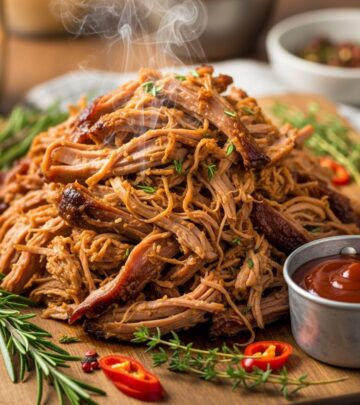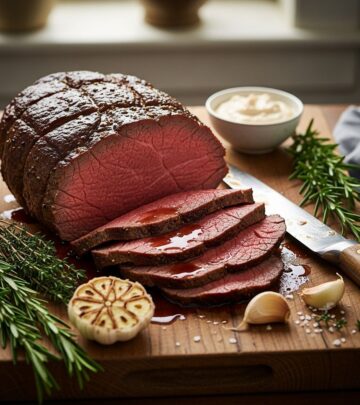Apricot Rhyme: The Rye & Apricot Cocktail from the Spotted Pig
Bartending tips show how emulsified preserves add a silky, balanced flavor and texture.

Apricot Rhyme: Rye & Apricot Cocktail from The Spotted Pig
The Apricot Rhyme is a standout creation from the bar at NYC’s beloved gastropub, The Spotted Pig. Fusing lush apricot preserves and robust rye whiskey, this drink earned acclaim for its perfectly poised balance of sweetness, spice, and aromatic complexity—a testament to the evolving landscape of modern cocktail craft. This article explores its history, craftsmanship, essential ingredients, and provides an expert guide to crafting your own at home.
The Story Behind the Apricot Rhyme
The Spotted Pig, a cornerstone of West Village dining, became widely respected for its innovative bar program as well as its food. The Apricot Rhyme was developed to showcase the marriage between stone fruit and whiskey, leaning into the warming embrace of rye and the soft, tart flavor of apricot preserves. The cocktail quickly became a favorite among the bar’s regulars due to its approachable flavor profile, textural intrigue, and seasonal adaptability.
Bartender John Byrne, credited for the drink, wanted something comforting, layered, and accessible—eschewing more esoteric ingredients in favor of reliable, high-quality bar staples. The result was a drink that straddles the line between classic sophistication and inviting fruit-forward modernity.
Building Blocks: Key Ingredients and Their Role
Let’s break down why each element of the Apricot Rhyme is essential in achieving its distinctive flavor:
- Rye Whiskey: Brings structure, spice, and a dry backbone. The peppery notes accentuate apricot’s subtle tartness and keep the sweetness in check.
- Apricot Preserves: Lends deep fruit essence and natural sweetness, mixing silkily into the cocktail for a jammy bite without cloying heaviness.
- Lemon Juice: Fresh acidity brightens the flavors, balancing the dense preserves and supporting the whiskey’s spice.
- Simple Syrup: Used judiciously, it softens the tartness and marries the components, ensuring the cocktail remains smooth and round.
- Angostura Bitters: A couple of dashes of bitters lend complexity, aromatic lift, and a subtle undercurrent of baking spice.
- Ice: Chilling and dilution are key—shaking with quality ice ensures the drink’s texture is light and its flavors balanced.
| Ingredient | Purpose in Cocktail |
|---|---|
| Rye Whiskey | Spice, structure, and backbone |
| Apricot Preserves | Fruity richness; sweet and tart complexity |
| Lemon Juice | Acidity; brightener and balance |
| Simple Syrup | Smooth integration and palate roundness |
| Angostura Bitters | Aromatic complexity and depth |
| Ice | Proper dilution and chilling |
Rye and Apricot: A Mixological Match
Combining rye with apricot is not accidental. Bartenders crave drinks that bridge the gap between refreshing and contemplative, and rye’s punchy spice transcends the overt sweetness of many fruit preserves. The lush, developed flavor of jarred apricot preserves is preferable to fresh fruit here, as it provides consistent sweetness and viscosity, ensuring the drink’s flavor remains stable year-round. The preserves also offer body and a gentle unctuousness, counterpointed by rye’s dry finish.
- Rye-based cocktails maintain integrity where fruit cocktails might otherwise become flabby or too sweet.
- Apricot’s natural tartness keeps the palate engaged without overwhelming the rye’s inherent strength.
Other whiskey and fruit pairings—think bourbon and cherry, Scotch and lemon—often feature in classic bartending, but rye and apricot offers a unique equilibrium: rustic, aromatic, and subtly bright.
Step-by-Step: How to Make the Apricot Rhyme
Ready to craft the drink yourself? Here’s a detailed process, including professional tips for flawless execution:
- Combine Ingredients: In a cocktail shaker, combine 2 ounces rye whiskey, 1 generous heaping teaspoon apricot preserves (preferably all-fruit, not overly sweet), 3/4 ounce fresh lemon juice, 1/2 ounce simple syrup, and 2 dashes Angostura bitters.
- Dry Shake: If preserves aren’t dissolving easily, try a short dry shake (without ice) to help them blend with the liquids.
- Add Ice and Shake: Fill shaker with ice. Shake hard for 10–15 seconds to chill and dilute; seek a creamy, aerated texture.
- Double Strain: Fine-strain the mixture into a chilled coupe or Old Fashioned glass to remove any undissolved bits of preserve.
- Garnish: Garnish with a small wedge of fresh apricot (in season) or a thin twist of lemon peel—noting that the garnish should echo, not overpower, the aroma.
Tips from the Bar
- Use high-quality preserves: Apricot preserves should be fruit-forward, not sickly sweet—seek out preserves with minimal added sugar or artificial flavors.
- Balance is critical: Sweetness can vary based on both preserves and simple syrup. Taste and adjust syrup if necessary.
- Don’t overshake: Over-dilution can flatten the flavors; shake hard but briefly for peak texture.
- Fresh lemon juice only: Bottled juice will dull the cocktail’s profile.
The Role of Technique: Getting the Most from Simple Ingredients
The genius of the Apricot Rhyme lies in skillful execution of relatively familiar ingredients. Here’s why bartending technique matters for this drink:
- A vigorous shake fully emulsifies the preserves, creating a pleasingly cloudy and consistent drink.
- Proper straining ensures elegance and a smooth mouthfeel.
- Chilling the glass ahead of time preserves the integrity of the cocktail and enhances its refreshment factor.
Flavor Profile: What to Expect in Each Sip
The Apricot Rhyme greets you with whiskey’s spicy, grain-driven nose, a touch of herbal bitterness from the Angostura, and a soft, jam-like sweetness that never cloys. The entry is zesty—thanks to lemon—yielding to a layered finish as the apricot melds with rye and bitters linger.
You’ll notice:
- Initial aroma: Spiced rye and stone fruit with a whiff of citrus oils.
- Mouthfeel: Round but refreshing, slightly creamy from the emulsified preserves.
- Aftertaste: Lingering rye warmth, balanced acidity, subtle persistent fruitiness.
Adapting the Recipe
One beauty of the Apricot Rhyme is its adaptability—here’s how you can riff on the original at home:
- Switch the whiskey: Try bourbon for deeper sweetness, or a blended Scotch for a smoky stone fruit profile.
- Alternate preserves: Substitute peach or plum for variation, noting you may need to tweak the syrup to maintain balance.
- Bitters variation: Swap Angostura for orange or peach bitters to tweak the aromatic profile.
Why The Cocktail Has Enduring Appeal
The Apricot Rhyme endures because it’s familiar yet novel, rich yet subtle, and compatible with all seasons. Its fruit-and-whiskey DNA gives it broad appeal among both aficionados and casual drinkers. It stands as a testament to modern cocktail culture’s embrace of accessibility, seasonality, and craftsmanship—qualities that defined the Spotted Pig bar and continue to influence bar menus far beyond New York City.
Frequently Asked Questions (FAQs)
Q: Can I use fresh apricots instead of preserves?
A: Fresh apricots don’t offer the same consistency or sweetness as preserves, which are designed to blend smoothly into the drink and deliver year-round flavor without seasonal variations. However, a homemade apricot syrup can be a worthy substitute if preserves are unavailable.
Q: What’s the best rye whiskey for this cocktail?
A: A mid-proof rye (around 90–100) with ample spicy and grain-driven flavors is ideal. Avoid overly oaked or excessively high-proof ryes, which can overwhelm the drink’s subtle fruit notes.
Q: How do I avoid a chunky texture from preserves?
A: Vigorously shaking the cocktail helps dissolve the preserves. Fine-straining when pouring is essential for a silky, elegant final drink.
Q: Is the drink very sweet?
A: When balanced properly, the Apricot Rhyme is lightly sweet with pronounced acidity and spice; it should be much less sweet than a typical dessert-style cocktail.
Q: Can this recipe be batched for parties?
A: Yes, but always shake or stir well immediately before serving to ensure the preserves are fully integrated. Adjust the sugar and lemon accordingly, as larger batches may require minor calibration for perfect flavor.
Bonus: Apricot Shrub & Alternate Applications
Looking for more apricot-forward drink inspiration? Consider the apricot shrub, a tangy syrup made by macerating apricots with sugar and vinegar. Shrubs like this bring an extra palate-lifting zing and can be used in low-alcohol highball variations, non-alcoholic spritzes, or as substitute for preserves in a less-sweet derivative of the Apricot Rhyme.
- Mix 1 oz apricot shrub with club soda for a refreshing non-alcoholic drink.
- Add a splash of shrub to gin and maraschino for a Last Word–inspired variation.
Conclusion: Crafting the Modern Classic
The Apricot Rhyme exemplifies the next generation of cocktails—rooted in tradition but open to thoughtful innovation. By focusing on quality ingredients, sound technique, and approachable flavors, this drink remains a benchmark for home bartenders and professionals alike. Next time you reach for the rye, consider the humble apricot: together, they create a cocktail that speaks to comfort, seasonality, and pure drink-making joy.
References
Read full bio of Sneha Tete












